


CELESTIA presents over 400 star systems with exoplanets that can be "visited" in 3-D! Like 55 Cancri (1.6.x) and Epsilon Eridani (1.6.x).
55 Cancri has at least 5 planets in orbit around it! (1.6.x). It's innermost known planet orbits in a very small orbit! (1.6.x).
In CELESTIA you can even visit exoplanets orbiting pulsars! Like PSR 1257+12 (1.6.x)!
Note: after running each link above in CELESTIA, Right Drag its window with your mouse to get a sense of the 3-D aspects of the stars and their orbits.
Are you unfamiliar with our 1.6.x and 1.4.1 links? For an explanation click here.
CELES-TIPS
The following will help you enjoy this page's 1.6.x and 1.4.1 links that run events directly in CELESTIA. If you're new to the program, these tips will also help you learn to use it.
You'll find more information about many of CELESTIA's controls on our Learning Center page.
EXOPLANETS
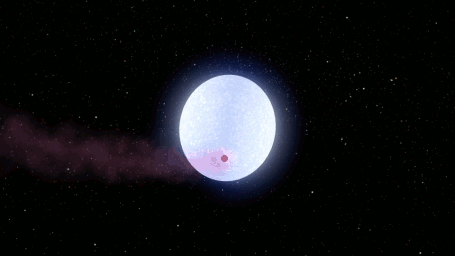 Image Credit: NASA/JPL-Caltech
Image Credit: NASA/JPL-Caltech
PLANETS BEYOND OUR SOLAR SYSTEM
Exoplanets, also called extrasolar planets, are planets that are beyond our own Solar System. Representing one of today's most exciting areas of astronomy, their study is important because it may one day answer the pivotal question: is life abundant in the universe?

For centuries exoplanets have been theorized to orbit stars other than our Sun. However the first exoplamet was not confirmed to exist until 1992. Since then more have been discovered with increasing regularity due to improving detection techniques. By mid-2013 the total number of confirmed exoplanets was approaching one thousand, these in orbit around approximately seven hundred stars! Meanwhile over 3,500 more "candidate exoplanets" were awaiting confirmation. By mid-2019 the existence of over 4,000 exoplanets had been con- firmed!—these orbiting myriads of distant stars.
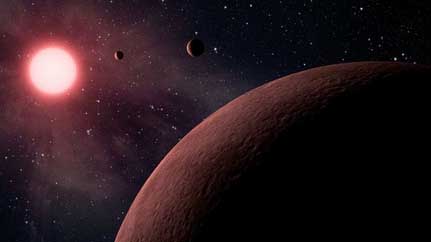
In addition, at least one exoplanet has been detected which is not in orbit around any star system! Just 80 light years from Earth, this "free-floating" exoplanet seems to confirm theories that planet-sized bodies can form well away from stars, as well as in protoplanetary disks. Here is a short ESO video of how this exoplanet may look: Free-Floating Planet.
How Planets Are Born ![]() from NASA SVS gives a nice video introduction on the formation of planets. And Wikipedia's Exoplanet page is quite informative.
from NASA SVS gives a nice video introduction on the formation of planets. And Wikipedia's Exoplanet page is quite informative.
NASA's and JPL's mind-blowing Exoplanet Exploration, Exoplanet Archive, SVS Gallery of Exoplanets and Exoplanet Catalog pages give their latest exoplanet counts and much more. For an impressive table of related information, here's NASA's Current List of Confirmed Exoplanets. And here's a Q & A page that explains why this count differs from others published.
Want to visit the known exoplanets? You can streak across the cosmos to tour them in 3-D with NASA's excellent Eyes on Exoplanets, an awesome interactive feature. Here are the links to its tutorial video pages: Tutorial 1 Tutorial 2 Tutorial 3.
And here are two awesome interactives that let you examine the sizes and orbits of exoplanets: Goldilocks and 288 Exoplanets ![]() .
.
FINDING EXOPLANETS
 Image Credit: NASA/JPL-Caltech
Image Credit: NASA/JPL-Caltech
Astronomers have devised clever methods of detecting exoplanets. Most involve measuring subtle, exoplanet-induced variations in the electromagnetic radiation that reaches us from the stars they orbit. These variations are generally quite small and may manifest themselves in the radiation's direction, intensity, spectrum, timing, consistency and more.
One of the easiest-to-understand ways of detecting exoplanets is the "transit method", which measures the tiny decrease in light reaching us from a star when one or more of its planets pass in front of it. Kepler Transit Graph
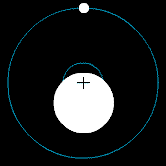
Another of the easiest-to-understand ways of detecting exoplanets is the "astrometry method", also often called the "wiggle method". This accurately measures the position of a star as it moves through space. If the star has one or more planets, their mutual gravity may cause the star's path to "wiggle" or oscillate like the star in the animation directly above.
You'll find information on the ways astronomers find planets in orbit around other stars in NASA's 5 Ways to Find a Planet and on Wikipedia's Methods of Detecting Exoplanets pages.
PROPERTIES OF EXOPLANETS
PHYSICAL PROPERTIES
As the NASA/Ames/JPL-Caltech diagram above sug- gests, exoplants are proving quite varied. In fact, they are proving to be more varied than the planets in our own Solar System! Given the variety of stars they orbit, and the diverse conditions possible around any star and in collapsing interstellar molecular clouds, this is not surprising. Scientists speculate that the range of possible types of exoplanets is vast indeed.

Image Credit: Marc Kuchner/NASA GSFC
Many of the earliest confirmed exoplanets were found using methods that favor detecting sizeable planets in modest-sized, short-period orbits (some as short as a few days!) This is why so many have been dubbed "hot Jupiters"! Even so, considerable numbers of smaller, Earth-sized exoplanets have now been detected, and over a billion are now estimated to exist in our galaxy alone. Considering all types, exoplanets in our galaxy may total in the hundreds of billions, perhaps trillions! And that estimate seems to continue to rise!
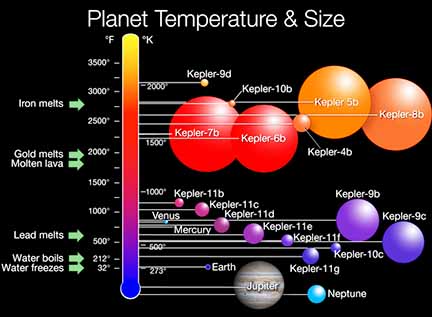
Image Credit: NASA - Kepler Mission
Of particular interest in the quest to learn more about exoplanets is the treasure trove of secrets that their atmospheres may one day reveal. Its atmosphere can give hints as to whether an exoplanet is likely to harbor conditions that may support life. (To this end, Hubble spied the first atmosphere of an exoplanet in the year 2000!) Of course, scientists have long recognized that life found on exoplanets may exist under conditions radically different from those found here on Earth.
Here are links to some short but cool NASA videos that show some of the types of exoplanets we are already discovering or are one day likely to encounter. Viewed in full-screen they look awesome!
An Exoplanet Most Like Earth ![]()
Earth-like World
Water World
Kuiper Belt World
Hot Jupiter
Kepler 10-b
Weird Warm Spot on Exoplanet ![]()
Kepler-20, An Unusual Planetary System
Hot Lava World ![]()
HD 189733b Exoplanet Animation ![]()
Kepler: Diversity of life possible on other planets
ORBITAL PROPERTIES
As mentioned above, many of the earliest confirmed exoplanets were found using methods that favor detecting sizeable planets in modest-sized, short-period orbits (some as short as a few days!) However, other techniques have identified exoplanets that orbit considerably further from their host stars.
Here's a link to another interactive that can help you get a feel for the orbital properties of exoplanets, a NY Times 2-D animated diagram, Kepler's Tally of Planets that shows the relative numbers and sizes of the exoplanetary systems discovered by Kepler.
HABITABLE ZONES
Image Credit: NASA/Ames/JPL-Caltech
One of the most important aspects of a stellar system which possesses exoplanets is its "habitable zone". Because our quest to understand exoplanets is largely a quest to find extraterrestrial life, and because life as we know it requires liquid water to exist, a star system's habitable zone is the region around its star (or stars) where a planet-sized body could be expected to maintain liquid water on its surface. This has also been popularly called the "Goldilocks zone", because it is the region where it is neither too hot, nor too cold, for liquid water to exist, but rather is "just right".
The sizes of habitable zones depend on several factors, including the sizes, ages and colors of the stars which they envelop. Now you can study various aspects of habitable zones with Circumstellar Habitable Zone Simulator
As this short NASA video shows, the temperature and size of a star determine the size of its habitable zone: Comparative Life Zones. Excitement in the astronomical community is growing as more and more Earth-sized and Earth-like planets are being found in their host stars' habitable zones.
Home Intro News Gallery Sky-Gifts Bonuses Tips
Learning Ctr Help Links Credits Legal Contact Us
© 2007-
by Gary M. Winter. All rights reserved.
Interested in political cartoons and humor?
Check out The HIPPLOMATS™.
SkyMarvels, Sky Marvels, SkyMarvels.com, EXOPLANETS! Planets around other stars. Planets beyond our Solar System. celestia4all, celestiaforall, CELESTIA, astronomy, space, simulations, animations, downloadable astronomy posters, stars, planets, Inner Planets, Outer Planets, Inferior Planets, Superior Planets, moons, asteroids, comets, Oort Cloud, galaxy, galaxies, Milky Way, Andromeda, globular clusters, binaries, quasars, black holes, supermassive black holes, telescope, telescopes, planetarium, software, freestuff, satellites, add-ons, addons, scripts, eclipses, Solar Eclipses, Lunar Eclipses, Solar Eclipse Finder, Lunar Eclipse Finder, mutual eclipses, transits, occultations, Solar System, CELES-TOOLS, celeSTARrium, CELX, CELX programming, Freebies, Bonuses, multiple views, atronomical unit, light year, parsec, meteors, meteor showers, Perseids, Geminids, Leonids, barycenter, time, Time Zones, tides, alignments, conjunctions, oppositions, seasons, apogees, perigees, aphelion, perihelion, Earth, Luna, Mercury, Venus, Mars, Jupiter, Galilean Moons, Io, Europa, Ganymede, Callisto, Saturn, Titan, rings, Uranus, Neptune, Triton, E-M Spectrum, electromagnetic spectrum, astronaut, equinoxes, solstices, precession, rotation, spin, inclination, tilt, Ecliptic, orbits, ellipse, parabola, hyperbola
![]()
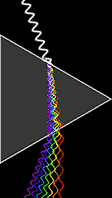
![]()
Donate safely with: PayPal
and receive one or more
Sky-Gifts. Your support is greatly appreciated!
NOTE: you do not need a PayPal account to donate.
SKY VIEWING
SOLAR SYSTEM
THE SUN
MERCURY
VENUS
EARTH
THE MOON
MARS
JUPITER
SATURN
URANUS
NEPTUNE
SMALLER WORLDS
STELLAR OBJECTS
EXOPLANETS
DEEP-SKY OBJECTS
SCALE OF THE COSMOS
———————
SKY-FUN / SKY-GAMES
FUN FACTS ABOUT
EXOPLANETS
The first exoplanet ever discovered orbits a pulsar!
Some exoplanets orbit two stars, not just one! That is, they orbit both stars in a binary systems!
Evidence suggests that, in the Milky Way alone, there are hundreds of billions of exoplanets! Of these, billions may be Earth-like!
One exoplanet has been nicknamed "Methuselah" because evidence suggests that it is 13 billion years old! If that is correct, it became a planet at the same time that the earliest galaxies were forming, less than a billion years after the Big Bang!
Exoplanet Kepler-22b may be an "ocean planet", that is, covered completely by water!
Exoplanets discovered thus far come in a range of sizes! The smallest is roughly the size the Moon! The largest has a diameter that is twice as great as Jupiter's!
EXOPLANETS INTERACTIVES
QUICK ACCESS LIST
Note: some links are echoed elsewhere on this page and may include descriptive text. Note too that there are a few links to interactives in the center column immediately next to this list, so they are not duplicated here.
Visit the surfaces of various exoplanets with NASA's cool Exoplanet Travel Bureau
NASA's Eyes on Exoplanets. Click on any star, compare to our Solar System. Awesome! On Web Other "Eyes"
Gravity Simulator has some very nice exoplanet sims:
Kepler 70-b
TRAPPIST 1-g
WASP 19-b
HD 20782-b
OGLE-2016-BLG-1195L-b
SuperPlanetCrash is an educational game/simulation that will teach you much about orbits and exoplanets!
ViewSpace check out all the Topics.
Transiting Exoplanets Sim Zoom, twist, choose planet type and size, etc. Cool!
Link to the NY Times feature Kepler's Tally of Planets
Circumstellar Habitable Zone Simulator
Sizes and Orbits of 288 Exoplanets ![]() .
.
SKYMARVELS™
CELESTIA ADD-ONS
SKYMARVELS™ POSTERS
SKYMARVELS™ VIDEOS
Solar Eclipses:
Lunar Eclipses:
Moon's Occultation of Venus 2010 May 16
Moon's Occultation of Venus 2010 Sep 11
The Same Side of the Moon Always Faces Earth